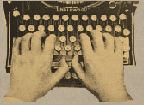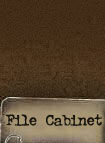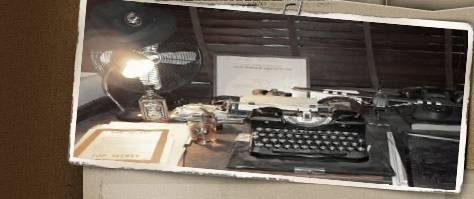/Oberdak_Title.jpg)
File No.:
Case File # 16
Title: The Oberdak Case
Subject:
Podporucznik Pilot (Second
Lieutenant-Pilot) Czesław
OBERDAK, born July 20th, 1921 in
Krakau (Poland), died March 8th,
1945 in Apeldoorn
(The
Netherlands) identified after 64
years.
Investigation made at:
Loenen, Municipality of
Apeldoorn (The Netherlands)
Period Covered: May 30th,
1944 – December 10th, 2009
Date: March 30th,
2011
Case Classification:
Identification of missing Polish
pilot whose remains had been
mistaken for those of Nazi
retaliation victim in Holland,
1945
Status of Case: Case
Closed
Introduction: On May 30th
1944, Polish pilot Czesław
Oberdak escorted a number of
Allied bombers, heading for the
German city of Magdeburg. Close
to the target, Oberdak's P51
Mustang was hit. The Pole
managed to land his damaged
plane near the Dutch town of
Ommen, set fire to it and made
contact with local resistance
fighters. After months of being
moved from hiding place to
hiding place, Oberdak was
finally caught
by the Nazis on
December 24th, 1944. He was
found guilty of espionage, due
to the civilian clothes he wore
when he was arrested. Shot on
the 8th of March, 1945 during
the infamous "Woeste Hoeve" Nazi
retaliation execution, Oberdak's
body ended up in a mass grave.
A
few weeks later, when
World War
Two was over almost every body
in this grave was identified.
One of the two exceptions was Oberdak.
It took another 64
years before Czesław
Oberdak
could be buried with military
honors in his hometown Krakau in
Poland.
|
/Oberdak_Uniform(2).jpg)
Second Lieutenant-Pilot Czesław
OBERDAK |
|
REASON FOR INVESTIGATION:
Although we did have an active role
in the investigation which led to
the positive identification of
Oberdak, we were able to monitor the
development of this case closely.
In our "Miscellaneous
Page" we introduced the Dutch
police detectives Mosk and Waterman
when we described their "Wamel
Case"; the last war crimes
investigation in The Netherlands.
These sleuths were highly
instrumental in solving the Oberdak Case. Furthermore, as a
member of the Dutch Red Cross
Missing Persons of World War Two
Work Group, battle detective Tom,
was given details of Oberdak's
exhumation, the results of the
subsequent DNA-analysis and the
preparation of the remains for
shipment to Poland for the final
state burial. In March 2010 we paid
our respects at Czesław Oberdak's
final resting place in Poland. The
story of
Second Lieutenant Oberdak also brought
back memories of one of the most
evil Nazi atrocities during the
occupation of Holland.
We consider it important to make
this story known to the public.
|
|
SYNOPSIS:
The story of Polish pilot
Oberdak was featured in a fair
amount of publications in The
Netherlands. We can therefore
confine this Case File to a brief
summary of events in a chronological
order. |
Hiding
After Oberdak's forced landing
and contact with local resistance,
the pilot was moved to several safe
addresses in the Northern provinces
of The Netherlands. In September
1944 resistance people took Oberdak
to Amsterdam by train. During a
typical Dutch celebration of Saint
Nicolas on the 5th of December three
photographs were taken of Czesław. These images proved crucial
in the post-war investigation. |
|
(Click on the
thumbnails to enlarge)
/Oberdak_Hiding_DEC_1944(2)_small.jpg)
/Oberdak_Hiding_DEC_1944(1)_small.jpg)
/Oberdak_Hiding_DEC_1944(3)_small.jpg)
(Photo Credit: KLPD,
Netherlands' National Police Agency)
Another photo taken during the Sint
Nicolaas party in Amsterdam
(click to enlarge):
/Oberdak_Hiding_DEC_1944(4).jpg) |
On the 10th of December 1944 Oberdak
and other Allied pilots were brought
to a man-made cave with the intent
to wait for the Allies to liberate
all of Holland.
|
Arrest
Destiny struck on the 24th of that
month when a German military truck
broke down next to the cave. The
Nazi's saw movement in the
underbrush and alarmed the Grüne
Polizei (Green Police) who arrested
all resistance workers and the
Allied airmen they were hiding.
Because of his civilian clothes,
Oberdak was sentenced to death for
espionage.
The Germans locked our pilot away in
a makeshift prison in the town of
Doetinchem and waited for a suitable
moment to execute Oberdak's death
sentence.
|
Ambush in Apeldoorn
Meanwhile, approximately a third of
Holland had been liberated by the
Allies. The rest of the country
suffered from the Nazi policy of
removing all valuable goods from
Holland and taking them to the
Fatherland. Local Dutch resistance
organizations grew in numbers and
size, but where still scattered
across the country and often
operating independently.
The cat and mouse game between these
groups and the Sicherheitsdienst
(the Nazi Intelligence Service,
abbreviated as SD) became more
intense as the war grew to its end.
In March 1945 the resistance in the
town of Apeldoorn knew that the SD
was closing in on them, as all their
motor vehicles had been seized in a
night raid. Fortunately none of
its members were caught.
Geert Gosens, the leader of an Apeldoorn resistance group, named "GG-Groep",
was informed that the Germans were
about to transport a large shipment
of freshly butchered meat. The group
planned to steal this meat from
under German noses to distribute it
to needy families and people hiding
for the German oppressor. The plan
was to just take the meat by showing
up at the slaughter house with an
army truck, wearing Nazi uniforms.
In the night of March 6, 1945 a
group of armed men set off on
bicycles to the Apeldoorn – Arnhem
highway.
There was hardly any traffic but
towards midnight they stopped a BMW
326 convertible.
Counter to all expectations, the
occupants resisted, drew firearms
and attempted to escape. From two
sides, Gosens' men opened fire with
their automatic British Sten
submachine guns.
The car, and the Nazis inside it,
were riddled with 9 millimeter bullets rendering the
vehicle useless for the intended
meat theft.
Geert Gosens and his men mounted
their bicycles and left the scene in
a hurry. They were unaware of the
fact that they had just shot
Hans Albin Rauter, the supreme
chief of all German police, security
and intelligence services in The
Netherlands or "Höhere SS- und
Polizeiführer Nordwest".
|
Nazi investigation
Rauter, feared all over The
Netherlands for his tyranny, had
sustained several gunshot wounds,
but was not dead; unlike
his driver and his aide,
Oberleutnant Exner. After the
shot-up car was found in the early
morning of March 7, the
Sicherheitsdienst immediately
launched an investigation. Several
Nazi detectives from the SD offices
in Arnhem, Apeldoorn and Zwolle
rushed to the scene.
The site of the ambush was processed
like a crime scene.
With crayon the position of
Rauter's BMW was indicated on the
tarmac road top, as were the spent 9
millimeter casings.
Plaster was poured in tire tracks in
the roadside verge and a
reconstruction of the shooting was
done by SD detectives.
They also ordered Dutch crime scene
photographer Jan Muda from the
Apeldoorn police to document the
location of the ambush. Muda took
his photos when the dead bodies of
the driver and of Oberleutnant Exner
where still in their car seats. |
(Click to enlarge)
/Oberdak_Woeste_Hoeve_Ambush_Car_Diagram_small.jpg) |
|
(Click on the
thumbnails to enlarge) |
/Oberdak_Woeste_Hoeve_Ambush_site%20(2)_small.jpg) |
1. Detectives take notes
and examine the spot where
Rauter's car was caught in a
cross fire. Note chalk
markings on the road top. At
the scene 234 empty shell
casings were found. |
/Oberdak_Woeste_Hoeve_Ambush_site%20(3)_small.jpg) |
2. Rauter's shot-up BMW
326.
Apeldoorn police
photographer took this
photograph standing on the
roof of a bus. |
/Oberdak_Woeste_Hoeve_Ambush_site%20(5)_small.jpg) |
3. The BMW 326 from another
angle.
The dead driver and Rauter's
aide are still in the
vehicle. |
/Oberdak_Woeste_Hoeve_Ambush_site%20(6)_small.jpg) |
4. The dead driver behind
the steering wheel of Rauter's BMW.
Note 9 millimeter bullet
holes. In total 75 bullet
holes were counted. |
/Oberdak_Woeste_Hoeve_Ambush_site_small.jpg) |
5. Chalk lines indicate
where Rauter's BMW halted
and was riddled with bullets
from British Sten automatic
carbines. The circles close
to the photographer mark
empty shell casings. |
/Oberdak_Woeste_Hoeve_Ambush_site%20(9)_small.jpg) |
6. A detective's plaster
kit sits in the road side
verge as a cast of a tire
track is drying. |
/Oberdak_Woeste_Hoeve_Ambush_site%20(7)_small.jpg) |
7. The highway looking
south in the direction of
Arnhem.
Rauter's vehicle was moved
to the side of the road but
not before the original
ambush position was
indicated in chalk. |
/Oberdak_Woeste_Hoeve_Ambush_site%20(12)_small.jpg) |
8. Sicherheitsdienst
detectives act as resistance
shooters in a reconstruction
of the ambush. |
|
Retaliation
The Nazis struck back hard and
ruthless. Rauter's substitute, SS-Brigadeführer
Eberhardt Schöngarth ordered that
hundreds of Dutchmen were to be shot
in reprisal. The official German
statement read:
|
|
/Oberdak_Deatch_Sentence.jpg)
"As a result of a
cowardly and vicious raid on the
passengers of a German car
committed by a group of terrorists
in the night of 6 to 7 March 1945,
several hundreds of terrorists and
saboteurs
were summary shot in public on the
8th of this month." |
At first, Schöngarth had instructed
that 500 people were to be shot. But
this proved to be a problem. The
Germans did not have that many
prisoners sentenced to death or
hostages, incarcerated for exactly
the purpose of retaliatory
execution. They therefore took most
of the political prisoners and
arrested resistance fighters from
the Apeldoorn area and brought them,
116 men in total, to the site of the
ambush. All were shot several
hundreds of yards from an inn named
"Woeste Hoeve" on March 8, 1945.
Czesław Oberdak was one of them.
|
Mass grave
Shortly after the mass executions,
the remains of the men killed at the
road side of the Arnhem - Apeldoorn
highway were buried in a grave in
the Heidehof General Cemetery in the
town of Ughelen. A few weeks later
World War Two was over.
Dutch authorities immediately
started exhuming all the bodies in
Heidehof. Police photographer Muda
took part in the investigation. This
resulted in the positive
identification of all but two of the
116 men. All except Oberdak and
another victim of Rauter's revenge.
|
Identification
After the war a considerable number
of unidentified bodies, known to be
victims of the German occupation
from all over The Netherlands, had
been buried in the Honorary Burial
Ground in Loenen. Over the years
attempts were made to try and
establish the identity of these
"Unknown Dutchmen". Because of this,
Oberdak was exhumed from his grave
in 1982 and in 1995. This however
did not lead to his identification.
In the meantime Dutch reporter
Richard Schuurman had conducted
extensive research into the March
1945 executions. He developed a
theory according to which the man in
grave 1253 had to be Oberdak.
In 2005 the Polish authorities filed
a request to question Schuurman as a
witness in the case of the missing
Polish pilot Oberdak; an
investigation that had never been
closed in Poland.
Detectives Mosk and Waterman
were assigned to the case which put
the investigation in a high gear.
On February 13, 2008 they monitored
personnel of the Royal Netherlands
Army's Recovery and Identification
Unit when they again disinterred
the man in grave 1253. They did not
only unearth
Second Lieutenant Oberdak's remains, but
also the wristband of a Premo watch
that looked similar to the one
Oberdak wore at the Saint Nicolas
celebration in December 1944.
On October 24, 2008 the Netherlands
Forensic Institute (NFI) reported a
positive match between a DNA sample
of Oberdak's sister and the remains
from the Burial Ground in Loenen.
Czesław had been identified.
|
|
Now
(Click to enlarge)
/Oberdak_Loenen_2008.jpg)
February 2008; Police
detectives look on as
Army Identification personnel
unearths
the remains in grave 1253 in Loenen. |
Then
(Click to enlarge)
/Oberdak_Woeste_Hoeve_Disenterment(1).jpg)
May 1945;
disinterment at Heidehof Cemetery in
Ughelen.
|
On October 24, 2008 the Netherlands
Forensic Institute (NFI) reported a
positive match between a DNA sample
of Oberdak's sister and the remains
from the Burial Ground in Loenen.
Czesław had been identified.
|
Burial with military honors
It took some time to meet all
bureaucratic requirements before
Second Lieutenant Oberdak could be brought back to his
hometown Krakau.
In the mean time his body waited for
shipment in the laboratory of the
Recovery and Identification Unit.
It was during that period that the
volunteers of the Missing Persons of
World War 2 Work Group were given a
tour of the Army's identification
lab, where this photo was taken:
|
|
/Oberdak_RNLA_Identification_Lab.jpg) |
In the background,
behind Detective Waterman, a
small portion of Oberdak's casket
can be seen with a Polish flag
draped over it.
|
Finally on December 10, 2009 a
memorial church service was held
after which a military honor guard
carried
Second Lieutenant-Pilot Czesław Oberdak to his family grave
at the Rakowicki Cemetery in Krakau.
Personnel of the Recovery and
Identification Service and
Detectives Waterman and Mosk
attended the burial ceremonies. The
latter presented a copy of the official
police case file, bound in hardcover
and translated in Polish,
to Czesław's 92 year old sister Ludmila.
|
|
(Click on the
thumbnails to enlarge)
/Oberdak_Reburial_Ceremony_DEC_2009(5)_small.jpg) /Oberdak_Reburial_Ceremony_DEC_2009(8)_small.jpg) /Oberdak_Reburial_Ceremony_DEC_2009(2)_small.jpg) /Oberdak_Reburial_Ceremony_DEC_2009(6)_small.jpg) /Oberdak_Reburial_Ceremony_DEC_2009(7)_small.jpg) /Oberdak_Reburial_Ceremony_DEC_2009(10)_small.jpg) /Oberdak_Sister_Mosk_Flag_small.jpg)
(photos courtesy of
Netherlands National Police Agency) |
Rakowicki Cemetery
On Sunday March 14, 2010 we visited
Oberdak’s grave. We knew the plot
and row numbers of the grave, but
recent snowfall had made it
difficult to locate Oberdak’s final
resting place. A red, white and blue
ribbon of the Dutch Army protruding
from the snow finally gave away the
headstone for which we had come.
This is where Czesław Oberdak rests
today:
|
EXHIBITS:
Second Lieutenant-Pilot Czesław Oberdak's grave
at the Rakowicki Cemetery in Krakau
today:
|
|
(Click on the
thumbnails to enlarge)
/Oberdak_Cemetery_small.jpg) /Oberdak_Cemetery(2)_small.jpg) /Oberdak_Cemetery(4)_small.jpg) /Oberdak_Cemetery(5)_small.jpg) /Oberdak_Cemetery(0)_small.jpg) |
|
23 MAY 2011 UPDATE: Visit to
location of Rauter Ambush at the
Woeste Hoeve Inn |
|
Combat Scene Investigation |
|
/Woeste_Hoeve_CSI(0).jpg) |
|
On Saturday May 21st 2011
Battledetectives visited the
location where Rauter's BMW was
ambushed by Dutch Resistance
fighters. It is the original
Arnhem-Apeldoorn highway which has
become rather quiet after the
construction of the huge multiple
lane A50 expressway which now runs
parallel from it. |
|
From the photographs by Dutch police
photographer Muda, we pinpointed the
location where Rauter’s stopped and
was riddled by almost 300 Sten gun
bullets. The distance to the "Woeste
Hoeve" inn which is still there is a
good clue. A better one would have
been a dwelling of some sort visible
on the West side of the road in the
photographs looking South. The
structures is not there anymore but
in the thick undergrowth we found
what appeared to have been the
cellar of the house. Battle
detective Ivo also discovered the
steel plate used behind
old-fashioned stoves to reflect heat
into rooms; featuring a hole for
the stovepipe. |
|
(Click to enlarge)
/Oberdak_Woeste_Hoeve_Ambush_site%20(7)_small.jpg)
/Oberdak_Woeste_Hoeve_Ambush_site%20(11)_small.jpg)
/Woeste_Hoeve_Hose_Remnants(2)_small.jpg)
/Woeste_Hoeve_Hose_Remnants(1)_small.jpg) |
We then established the spot where
Rauter’s car had stopped and where
it was subsequently pushed to the
side of the road to give first aid
to Router and to forensically
process the scene.
We recreated the same markings on
the road top in yellow chalk and
parked a World War Two era jeep in
place of Rauter’s BMW convertible.
We then recreated some of Apeldoorn
Detective Muda’s Combat Scene
Investigation photographs in our
Now&Then format. |
|
(Click to enlarge)
/Woeste_Hoeve_CSI(5).jpg)
/Woeste_Hoeve_CSI(4).jpg)
/Woeste_Hoeve_CSI(7).jpg)
/Woeste_Hoeve_CSI(6).jpg)
/Woeste_Hoeve_CSI(8).jpg)
/Woeste_Hoeve_CSI(3).jpg)
/Woeste_Hoeve_CSI(2).jpg) |
Woeste Hoeve Monument
We then went a few hundred meters in
Northern direction to pay a visit to
the monument in honor of the victims
of the Nazi retaliation for the
March 7 1945 ambush. The following
day 116 prisoners had been shot near
the spot where Rauter’s car was shot
at. Czesław Oberdak was one of them.
The story has it that a German
soldier who refused to take part in
the executions, was lined up himself
and shot as an example too.
It must have been recently that
Oberdak's name has been added to the
glass pane with names of the victims
of the Woeste Hoeve tragedy. |
|
/Woeste_Hoeve_Monument.jpg)
/Woeste_Hoeve_Monument(1).jpg) |
Honorary Cemetery Loenen
The next stop was the Honorary
Cemetery in Loenen.
Approximately four thousand Dutch
men and woman, victims of World War
Two and later armed conflicts, are
buried here.
We found that Oberdak’s grave,
number E1253 where he had been
buried as an "Unknown Dutchman" for
decades, is vanished completely. In
between graves E1252 and E1254 of
two of Oberdak's fellow victims of
the March 8th 1945 killings, is an
empty space today. The ground not
longer needed now that Czesław
finally found his resting place in
Polish soil.
|
|
(Click to enlarge) |
|
/Oberdak_s_Former_Grave_Loenen(4)_small.jpg) /Oberdak_s_Former_Grave_Loenen(2)_small.jpg) /Oberdak_s_Former_Grave_Loenen(1)_small.jpg) /Oberdak_s_Former_Grave_Loenen(3)_small.jpg) |
5 MARCH 2020 UPDATE: Jan Muda's
incident scene camera on display
Today we visited the exhibition
"Zwart Wit" (Black White) about the
police in the Netherlands during
World War Two.
This is a temporary exhibition
traveling to various mayor Dutch
police buildings in the country.
We visited the exposition in the "De
Yp" building in Ypenburg, The Hague.
It shows, next to uniforms,
artifacts and weapons, the camera
which took the photos on the scene
of the attack on SS-chief Rauter
near Apeldoorn, featured in this
Case File. |
|
(Click to enlarge)
/2020_Jan_Muda_Exhibition_1_small.jpg)
/2020_Jan_Muda_Exhibition_small.jpg)
/2020_Jan_Muda_Portrait_small.jpg)
/2020_Jan_Muda_Camera_small.jpg)
/2020_Jan_Muda_Camera_1_small.jpg)
"Zwart Wit"
exhibition in Ypenburg, The Hague,
with a portrait of Dutch detective
Jan Muda (center) and his Rolleicord
camera (right) |
|
 |
|
Back to Case Files
 |













